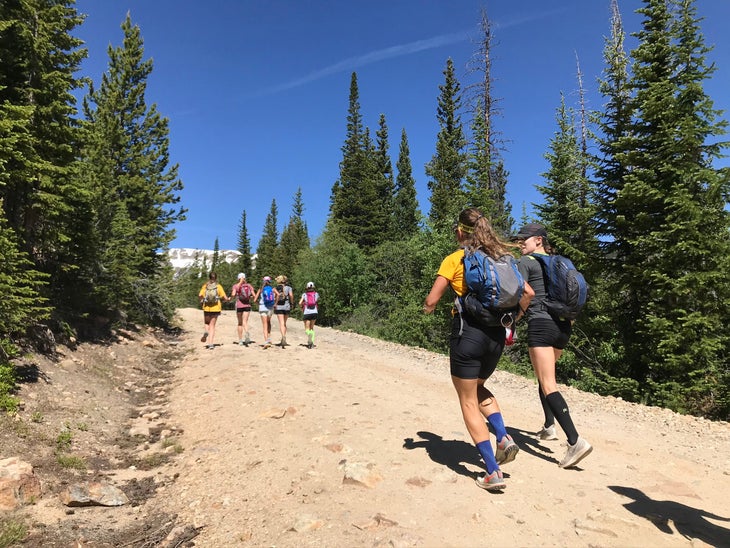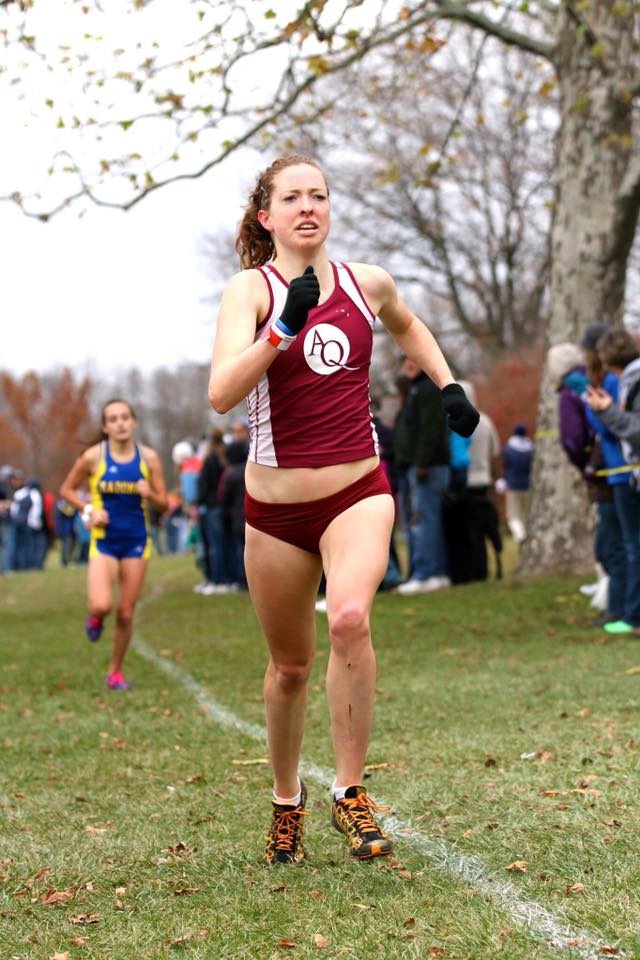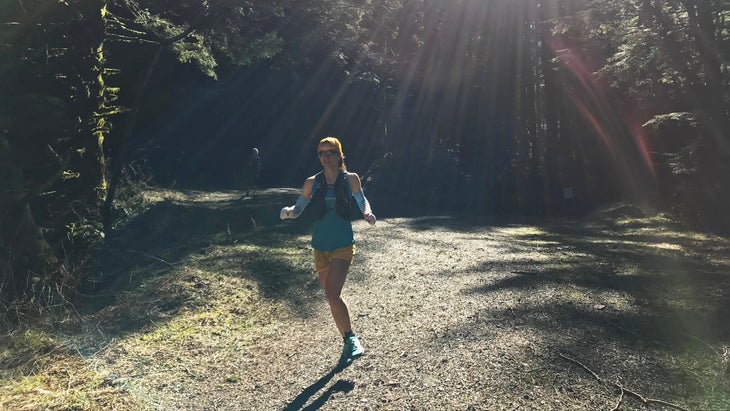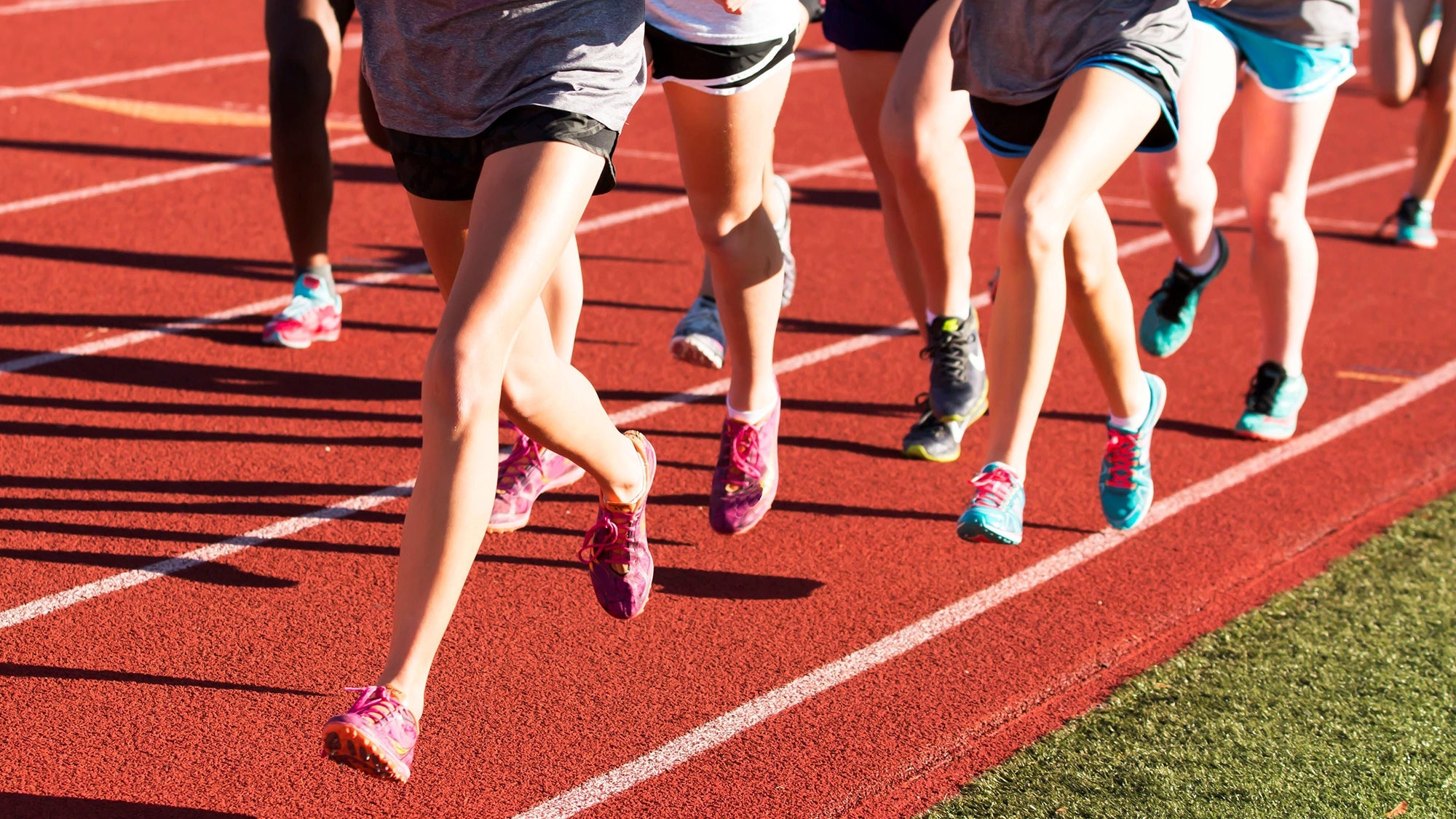I first experienced food and body issues in middle school. My home life was stressful—my mom had cancer and my dad had lost his job—and I felt an urge to control something, anything. I experimented with self-denial. I ate less and less. And then I bonked, hard, at my favorite race, the Bolder Boulder 10k.
I’m lucky that race was my disordered eating rock bottom. After that disappointment, I started eating to win. As with many female athletes, I faced additional food and body pressures throughout my running journey. But I was armed with willingness and desire to nourish my body, because I knew that it was necessary to be an enduring athlete and champion.
I am lucky that my dreams pulled me away from self-destruction, and that I was able to commit whole-heartedly to a journey toward self-acceptance. It can be a hard course to chart in the midst of all the pressure young runners face.

Everyone faces pressure about how they look. But female athletes, in particular, face extra. These include societal “thin ideals” (See: Diet culture on every screen and grocery store check-out line, even overheard at the dinner table). They also face sport-specific expectations. Such expectations include myths about runner bodies, including that lighter is faster, especially when it comes to a so-called “racing weight.”
Mary Cain, who in 2013 broke the U.S. high school 2-mile record I set in 1991, has bravely shared her struggles with disordered eating and weight insecurities. She’s taken a firm stance against the so-called ideal runner’s weight or body—and rightly so.
“There is not a doctor, coach, or scientist who has the expertise required to define ‘ideal’ or ‘perfect’ for the human body,” Cain says. “Why can no one define them? Because these very terms are conceptual and not quantifiable. Bodies, like everything in life, are imperfect. They change, grow, and adapt over the long term and also have short term fluctuations. To be competitive I need to stay as fit as I can, but fitness is not defined by a number. If I fuel properly, and train to be fast, strong, and tough, my weight will be right where it’s supposed to be.”
This awareness is what I want for all athletes: For them to respect, fuel, and listen to their bodies. To trust the process. To cast off any voices that tempt them to do otherwise.
Call out diet culture and set expectations
Many factors—including genetics, mental health issues like depression and anxiety, socioeconomics, and personality traits—contribute to eating disorders. Anyone may experience an eating disorder, but external pressures can be especially damaging triggers for young and developing athletes.

Rachael Steil, author of Running In Silence and founder of a nonprofit by the same name, says this is where onus falls on adults. “We need to have training for coaches [and] athletic staff each year so that we can better identify eating disorders [and] body image issues in our athletes, and hopefully prevent disordered eating from progressing unnoticed for years,” she says. “Bringing in a sports dietitian who can speak on disordered eating and proper nutrition to the team has seemed to have been a great thing for the girls I coach, too.”
TIP: Especially during development, it’s best to steer clear from weight- or appearance-focused coaching methods. Yes, this means that youth, middle and high school runners should not tolerate any body-shaming or weight-loss directives. Plus: No moralizing (“good” or “bad”) of food, and no comparisons (to self or others). In the alternative, seek positive coaches and team cultures.
Eating disorders are life-threatening and need to be addressed ASAP
Eating disorders, including anorexia, bulimia, and binge eating disorder, are serious illnesses and need to be taken seriously. They exist along a continuum with all food and body issues, including disordered eating and poor body image.
“No eating disorder is the same as another. Disordered behaviors can take many forms,” says Kara Bazzi, co-founder of Opal Food and Body Wisdom in Seattle, Washington. She says most people don’t fit neatly into an official diagnosis, and therefore should be addressed through a broader lense of identifying thoughts and behaviors marked by anxiety, fear, or distress.
Signs of disordered eating include behaviors around food, exercise, one’s body, and around others, plus physical and psychological symptoms. According to Opal, these signs include:
- Strange eating behaviors
- Avoiding or restricting food
- Secrecy around food
- Avoidance or excessive hydration
- Frequent restroom breaks
- Training more than recommended
- Anxiety in absence of working out
- Noticeable weight changes
- Changes in dressing behaviors (avoiding or “showing off”)
- Frequent weighing in on scale
- Isolation
- Irritability
- Cold intolerance
- Irregular menstrual cycles
- Fainting or feeling lightheaded
- Loss of concentration
- Dehydration
- Digestive issues
- Fatigue
- Hair loss
- Depression
- Anxiety
TIP: Speak up—to a coach, parent, or trusted adult—if you or a friend is struggling with food, eating, or body image. Recovery is possible, and treatment options wide-ranging. Experts to talk to include doctors, psychologists and other mental health pros, athletic trainers, and registered dieticians.
The National Eating Disorders Association:
• Toll-free, confidential helpline: 1-800-931-2237
• myneda.org/helpline-chat
• 24/7 Crisis Support via text: send NEDA to 741-741
Avoid low energy availability and Relative Energy Deficiency in Sport (RED-S)
One risk factor for eating disorders is dieting—restricting food. Additional risks of dieting include metabolism issues, binge eating, nutrient deficiencies, and depression. For athletes, insufficient fuel (aka low energy availability) compromises health, growth, and performance—including a syndrome of complications called Relative Energy Deficiency in Sport (RED-S). Young athletes need to eat enough to fuel their bodies for living, daily activities, and exercise, plus puberty and adolescence! Many underestimate their needs and can involuntarily end up with symptoms of RED-S.
TIP: Fuel with complete meals and plenty of snacks. Young athletes should talk to a trusted adult if struggling to find time or ways to eat and hydrate throughout the day. Know that most nutrition information you see and hear is not applicable to adolescent athletes. No matter your life phase, work with a registered dietician who specializes in sports and/or eating disorders (ideally with an Intuitive Eating and Health At Every Size approach) to dial in your specific nutritional game plans—know everyone’s needs are different!

TIP: Follow sports- and eating disorder-focused registered dieticians, like Megan Medrano and Maria Dalzot online. “This is where social media is a good thing, because there are so many sources out there,” says Dalzot. “This could be any professional of authority who has the education, who has the knowledge and understanding—say, a dietician who practices Health At Every Size. Reach out to them.”
TIP: Clean up your social feeds. Do you only follow people with sport-ideal body types? “It’s easy to get into this bubble and think the whole world is runners,” says Dalzot. “And that can seem like what’s normal or expected…You want to detox? Detox your social media!”
Strengthen your mind-body relationship
TIP: Choosing to be a runner is to choose to love yourself. Refuse to engage in the culture of un-ending comparison. They say that to love something is to pay attention to its details. What are the signals your body is sending you? What demands are you placing on it? Running can be demanding on the mind and body. How do you see your body: as a friend, or an enemy? If you’re struggling with food and body issues, it might be hard to see your body as a friend. Offer yourself the kind words you’d offer a friend in need. Doing so will add years to your running career and joy to your life.
—
Melody Fairchild is a running coach, director of Boulder Mountain Warriors Youth Run Club, founder of The Melody Fairchild Girls Running Camp, and master’s athlete in Boulder, Colorado. Her first book, GIRLS RUNNING (VeloPress), co-authored with Elizabeth Carey, is forthcoming. Elizabeth Carey is a freelance writer and running coach based in Seattle, Washington.


